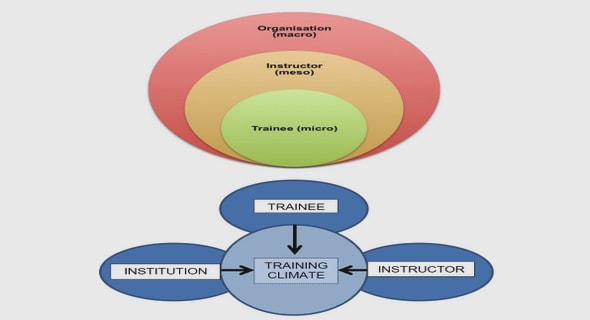Get Complete Project Material File(s) Now! »
Chapter 3 Business intelligence
“Bringing together the right information with the right people will dramatically improve a companyʼs ability to develop and act on strategic business opportunities”
–Bill Gates, Business @ The Speed of Thought: Succeeding in the Digital Economy
Introduction
Ensuring that high-quality information is consistently available and disseminated to those who need it in an organisation is “among the most challenging tasks of the modern corporation and one of the most under appreciated contributors to high performance and competitive advantage” (Neilson et al., 2010). This chapter starts by examining what business intelligence is, discusses what it encompasses and how it can contribute to accomplish this challenging organisational task.
Historical overview on the development of decision support
From a historical standpoint, business intelligence (BI) technology has been evolving over the last few decades. In the mid-1950s commercial enterprises began using computers for repetitive processing of data hence the orginal term data processing (DP). As the use of computers evolved transaction processing was used to denote the repetitive processing of business events and storing the associated data. Managers soon realised that summarised data had value with respect to decision-making. In the 1970s the first versions of analytical software packages appeared on the market referred to as management information systems (MIS). These systems supported structured decisions (Mallach, 2000:4-6). The 1980s saw the release of spreadsheet software that continues to be widely used. By the mid-1980s and early 1990s, executive information systems (EIS) (Turban et al., 1995) were introduced that quickly grew in popularity. These systems promised to provide top management with easy access to both internal and external information relevant to their decision-making needs (Rasmussen et al., 2002). The ʻʻ easy access” was due to user-friendly interfaces and powerful analytical functionalities. Similar factors accounted for the popularity of decision support systems (DSS) (Carlsson et al., 2002), which included amongst others exception reporting and an integrated data repository. DSS supported semi-structured and unstructured decision-making tasks (Chen, 1989:11).
Howard Dresner of Gartner Research is credited with the first use of the term business intelligence in 1989 to denote “a broad category of software and solutions for gathering, consolidating, analysing and providing access to data in a way that lets enterprise users make better business decisions.” However, this was not the first time the term was used. In his 1958 article A Business Intelligence System Hans Peter Luhn (1958:314) defined a ʻbusiness intelligence systemʼ as follows:
“Business is a collection of activities carried on for whatever purpose, be it science, technology, commerce, industry, law, government, defense, et cetera. The communication facility serving the conduct of a business (in the broad sense) may be referred to as an intelligence system. The notion of intelligence is also defined here, in a more general sense, as ʻ the ability to apprehend the interrelationships of presented facts in such a way as to guide action towards a desired goal.”
Luhnʼs definition includes the government military in his conception of “business” in “business intelligence” but the subsequent use of BI was also intended to distinguish it from government and military intelligence activities (Fleisher, 2003). Although the term BI was defined as early as the 1950s, according to Fleisher (2003:63) the meaning ascribed to it today was defined only in the 1990s and thus Dresner did introduce this new generally ascribed meaning through his definition that includes technology in his definition of BI.
In spite of Dresnerʼs often-cited 1989 definition many authors point out that there is little agreement in the literature on a common definition of BI (Arnott and Pervan,2005:71; Pirttimäki, 2007; Chee et al., 2009; Watson, 2009; Foley and Guillemette,2010:2; Wixom and Watson, 2010, Turban et al., 2011). This is not unusual in a research field that is still being established (Negash, 2004; Pirttimäki, 2007; Jourdan et al., 2008:124). Pirttimäki (2007) remarks that definitions of BI vary depending on the perspective from which it is defined. According to Arnott and Pervan (2005) definitions tend to reflect the background and interest of those defining it. Foley and Guillemette (2010) found that researchersʼ definitions are such that it suits their particular study. Petrini and Pozzebon (2004) assert that studies of BI reflect two approaches: either managerial with a process-orientation or technological with an emphasis on the set of tools to be used. According to Watson (2009:491) this does not normally cause confusion because of the context in which the term is used.
Even if no confusion arises—and both Kimball et al. (2008) and Turban et al. (2011:8) assert that it does—establishing a common definition would contribute to advancing the field. Several authors have attempted to address the lack of a common definition for BI. In 2007 Pirttimäki conducted a conceptual analysis and in 2009 Chee et al. reviewed the state-of-the-art of BI where both articles examined a range of definitions from which they developed a consolidated definition. According to Pirttimäki (2007) BI as a concept is not unambiguous and is at the very least dualistic comprising:
- “refined information and knowledge that describe the business environment, a company itself, and its state in relation to its markets, customers, competitors and economic issues; and
- process that produces insights, suggestions and recommendations (i.e. the refined information and knowledge described above) for the management and decision makers.”
He adds that the “information technology based systems used in analysing raw data and information and in storing and sharing valuable information and knowledge are considered an important part of BI.” Chee et al. (2009) reported that their study of definitions suggested “the technological aspect of BI … be considered as a BI system, whereas the process perspective is regarded as the implementation of BI systems. The product perspective is the result (i.e. actionable information) of analysis of business data which originated from various sources.” It appears that there is agreement from their reviews that BI involves technology, process and product. And yet there are differences: the process for Chee et al. (2009) entails the implementation of the technology whereas the process according to Pirttimäki (2007) is about management and decision-makers attaining insight from the product. This difference warrants a more detailed examination of the various definitions of BI. The next section examines the various definitions of BI and concludes with an integrated descriptive framework for use in this study.
Descriptive framework of BI
The purpose of this examination is to analyse definitions and descriptions of BI by academics, practitioners and BI software vendors over the past decade in order to derive a descriptive framework that can be used when conducting research on BI. Two questions that need to be answered arise: what are the themes captured in BI definitions and descriptions? Are there sufficient commonalities in these themes in the definitions and descriptions of BI based on the different perspectives of the authors thereof to allow a single framework to be developed? In order to answer these questions this section is structured as follows: first, the methodology used to answer these questions is discussed. Second, the data analysis is presented together with the resulting descriptive framework. Third the researcher discusses the definitions and resulting framework.
Methodology
This section discusses the method, the selection of data, the procedures for analysis of the data and the trustworthiness thereof as well as the overall limitations.
Method
In order to determine the themes in the selected definitions and descriptions (hereafter definitions) of business intelligence found in the literature an interpretive method, qualitative content analysis, was used. Qualitative content analysis is “a research method for the subjective interpretation of the content of text data through the systematic classification process of coding and identifying themes or patterns” (Hsieh and Shannon, 2005:1278). Additionally, content analysis provides an empirical basis for monitoring shifts in definitions. The data collected and analysed in this study can be compared to similar data collected at some point in the future to determine if such a shift has occurred.
Data selection
Definitions published during the last decade (2001-2011) by both prominent and less influential authors in academia and industry as well as leading BI software vendors were selected using purposive sampling (Zhang and Wildemuth, 2009). Definitions of BI were identified by phrases such as “BI is …”, “BI is defined as …”, “BI refers to …”, “a term that …” and similar introductory phrases or as an entry in a glossary. The definitions selected are listed in Table 1.
Data analysis
Although some researchers use only word counts and key word in context (KWIC) content analysis can extend beyond such simple procedures. The strength of content analysis lies in its reliance on the coding and categorising of collected data. A category, similar in nature to a theme, is “a group of words with similar meaning or connotations” (Weber, 1990:37). The themes and categories are constructed through coding and researchers can choose from a variety of approaches. The two main approaches to code data are an emergent approach, which is the more conventional grounded theory approach, or an a priori directed approach. In emergent coding no prior themes are established and themes emerge through repetitive scrutiny and comparison of the data. With a priori coding themes are established prior to the analysis based upon literature and the themes are then applied to the collected data. Revisions are made as necessary based on the categories that emerge from the data. The a priori generating of themes from previous studies is especially useful at the inception of data analysis (Berg, 2001).
CHAPTER 1 INTRODUCTION
INTRODUCTION
1.2. BACKGROUND
1.3. STATEMENT OF PROBLEM
1.4. PURPOSE AND OBJECTIVES
1.5. RESEARCH PARADIGM, DESIGN AND METHOD
1.6. CONTRIBUTION AND SIGNIFICANCE
1.7. DEFINITION OF TERMS AND CONCEPTS
1.8. STRUCTURE OF THESIS
CHAPTER 2 SMMES, INFORMATION AND ICT
INTRODUCTION
2.2. DEFINITIONS OF SMALL, MEDIUM AND MICRO‐ENTERPRISES
2.3. ROLE OF INFORMATION AND THE POTENTIAL FOR ICT IN GROWTH SMMES.
2.4. IMPACT OF SMME CHARACTERISTICS ON INVESTMENT IN AND USE OF ICT
2.5. CHAPTER SUMMARY
CHAPTER 3 BUSINESS INTELLIGENCE
INTRODUCTION
3.2. HISTORICAL OVERVIEW ON THE DEVELOPMENT OF DECISION SUPPORT
3.3. DESCRIPTIVE FRAMEWORK OF BI
3.4. DISCUSSION OF BI DESCRIPTIVE FRAMEWORK THEMES
3.5. BI IN SMMES?
3.6. CHAPTER SUMMARY
CHAPTER 4 RESEARCH PARADIGM AND DESIGN
INTRODUCTION.
4.2. RESEARCH PARADIGM
4.3. RESEARCH DESIGN
4.4. CHAPTER SUMMARY
CHAPTER 5 RESEARCH METHOD
INTRODUCTION
5.2. DATA COLLECTION
5.3. ETHICAL CONSIDERATIONS
5.4. DATA COLLECTION PROCESS AND DATA RECORDING PROCEDURES
5.5. DATA ANALYSIS AND INTERPRETATION
5.6. TRUSTWORTHINESS AND LIMITATIONS OF THE STUDY
5.7. CHAPTER SUMMARY
CHAPTER 6 RESEARCH RESULTS
INTRODUCTION
6.2. CASE STUDY NARRATIVES
6.3. CROSS‐CASE ANALYSIS FINDINGS AND DISCUSSION
6.4. CHAPTER SUMMARY
CHAPTER 7 SUMMARY, IMPLICATIONS AND FURTHER RESEARCH
INTRODUCTION
7.2. SUMMARY OF FINDINGS
7.3. IMPLICATIONS
7.4. CONTRIBUTION AND SIGNIFICANCE REVISITED
7.5. SUGGESTIONS FOR FURTHER RESEARCH
REFERENCES
APPENDIX
GET THE COMPLETE PROJECT


